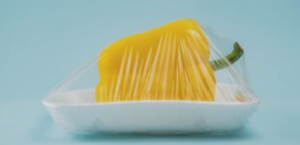Properly selected insulation is a key factor affecting the economy and reliability of refrigeration equipment. The most important parameters of insulation materials include their thickness, type and manufacturing technology.
On the basis of WPO (World Packaging Organization) reports, annual packaging costs for goods around the world exceed the amount of several billion dollars. The general packaging market is an industry worth approximately $ 700 billion and covers a wide variety of packaging materials and raw materials for their production. It is estimated that by 2020 the total value of the packaging market will reach up to 900 billion dollars.

Packaging is an integral part of most products and can perform various functions:
The most general breakdown of packaging materials is the type of raw materials needed to produce them.
Paper is used to produce a wide range of packaging products, such as labels, bags, etc. It can also be used for direct wrapping of goods as so-called brown wrapping paper. Cardboard is a much thicker and durable material than standard paper. The basic raw materials for the production of paper packaging are fibers originating from coniferous and deciduous trees. However, fibers of other plants such as flax and cotton may also be used for this purpose. As the problem of excessive foaming of the paper pulp appears in the paper production process, it is often necessary to use anti-foam preparations. The PCC Group offers products such as ROKAnol LP2023 and ROKAnol RZ4P11, which can be used as anti-foaming agents for the production of packaging paper.
Packaging can be made of one material or a combination of two or more materials or plastic with other materials (e.g. with paper) – so-called comprehensive packaging. Packages made of plastics are characterized by very good physical and chemical properties, which can additionally be modified by the use of various chemical additives.
The PCC Group offers a range of products that can act as polymer modifiers. The POLIkol series is a group of additives used as dispersants, emulsifiers as well as wetting agents. They have a positive opinion from the FDA (Food and Drug Administration), which allows their use in the form of indirect food additives. Polyoxyethylene glycols, also called PEGs, are characterized by very high solubility in water, low viscosity as well as electrostatic properties. The ROKAmer series products can also be used as dispersing and emulsifying additives for the production of modified polymers. The ROKAmer products are approved for use as an indirect food additives on the basis of the lists published by the FDA.
Another group of additives is ROKAnols (LP2023, LP2529, LP27, RZ4P11). These are alkoxylated fatty alcohols used among others as low-foaming agents in the production process of food packaging or materials intended for contact with food. These compounds do not contain silicone, and due to their structure, they have a low freezing point and provide ease of use in various processes. Also, lauryl sulfates can be used as indirect food additives and they are also on the list of the American FDA (Food and Drug Administration). It should be remembered that ROSULfan A (Ammonium Lauryl Sulfate) and ROSULfan L (Sodium Lauryl Sulfate) must be used in accordance with the definitions provided by the organization, not exceeding the maximum permitted dose.
In practice, several basic materials are used for the production of packaging:
The PCC Group also offers products used in the production of polyurethane fillings, which are increasingly used in the packaging sector. These products include, for example, Ekoprodur 1814W and Ekoprodur OP2 / S.
The main raw materials for the production of wooden packaging are plywood, fibreboards, wood from deciduous and coniferous trees in various forms (e.g. veneer) and wicker from shrub trees. Veneer boxes are durable, cheap and flexible. They are usually used to pack fruit, eggs and fish. Solid leak-proof cases are perfectly suited for transport, but also for storing materials. Another example of transport and auxiliary packaging made of wood are the popular EURO pallets. Thanks to them, it is possible to stably transfer large amounts of materials. They also play a protective role and facilitate storage after the transport. Apart from numerous advantages, such as low thermal conductivity, low environmental harm and effective protection of goods against mechanical damage, wooden packaging also has weaknesses. It is usually susceptible to moisture, has high flammability and can also absorb unpleasant odours.
Aluminum, thanks to compatibility with printing technologies, gives the possibility to create packaging with various inscriptions and graphics, ensuring the identity of the brand. Aluminum packaging is also very light and provides a good barrier to light, gases and moisture, thus extending the life of products. Aluminum can be used as packaging in the medical, food, cosmetics and beverage industries, e.g. for the production of cans and containers.
Glass is made of many various raw materials, such as sand, soda ash, limestone and glass cullet. The production process of such packaging consists of mixing and heating raw materials and then forming the desired shape. The biggest advantage of glass packaging is that it is 100% recyclable and can be recycled without losing quality or cleanliness. In addition, the glass is non-porous and impermeable, so it does not affect the taste of food and beverages stored within.
Properly selected insulation is a key factor affecting the economy and reliability of refrigeration equipment. The most important parameters of insulation materials include their thickness, type and manufacturing technology.
Raw and intermediate chemical products cover a wide variety of substances intended for different applications. They are used, for example, in the manufacture of cosmetics and detergents, as well as formulations in heavy industry (mining, metallurgy, constructions, and power generation).
Agriculture is an extremely important part of the economy, whose aim has first and foremost been the production of food. Moreover, plant cultivation and animal husbandry provide various raw materials for the food, shoe, chemical, textile, and many other industries.